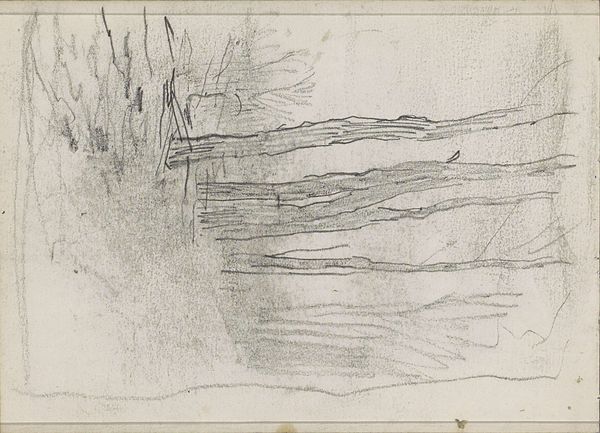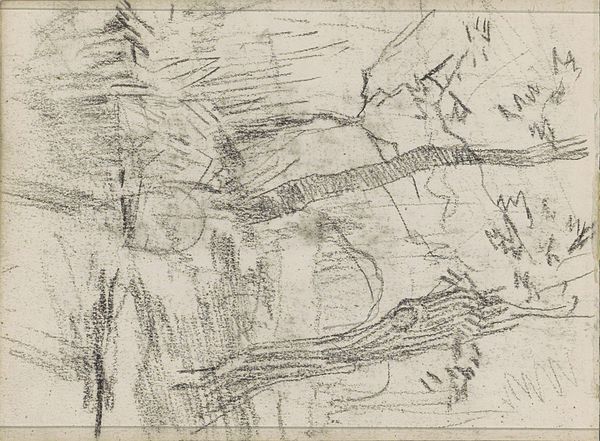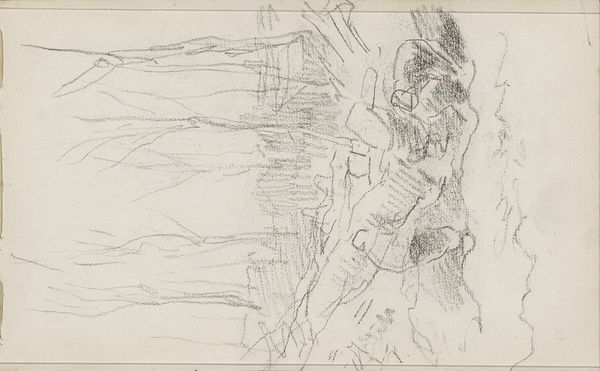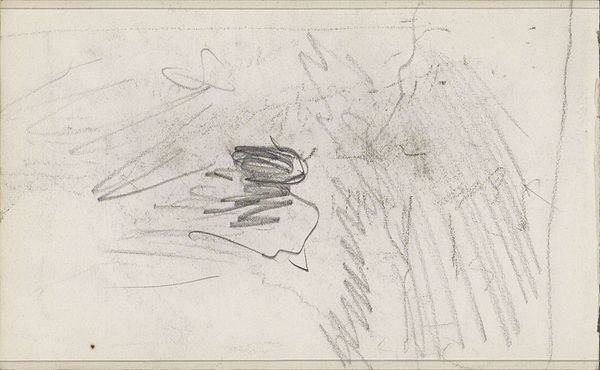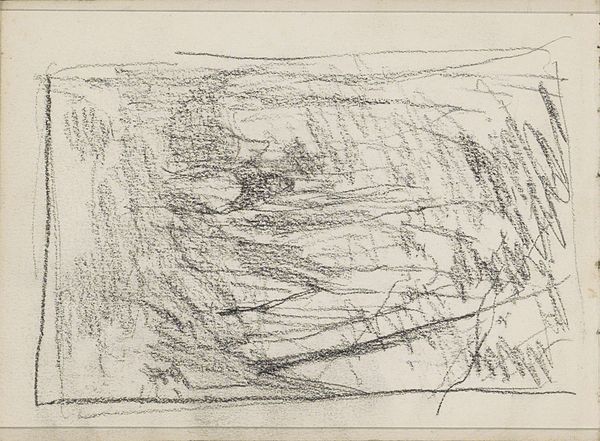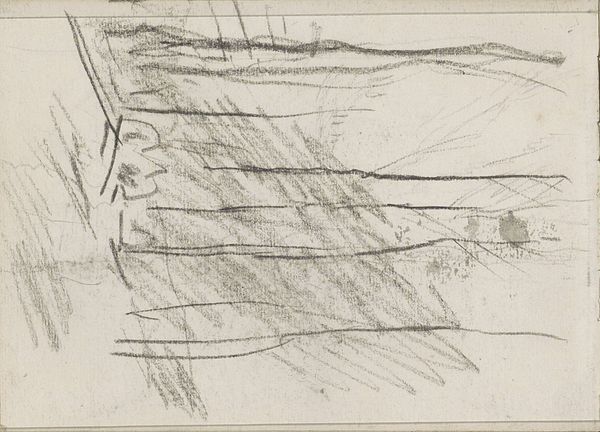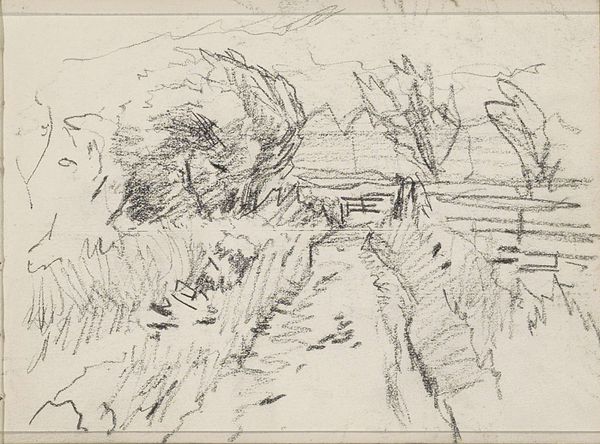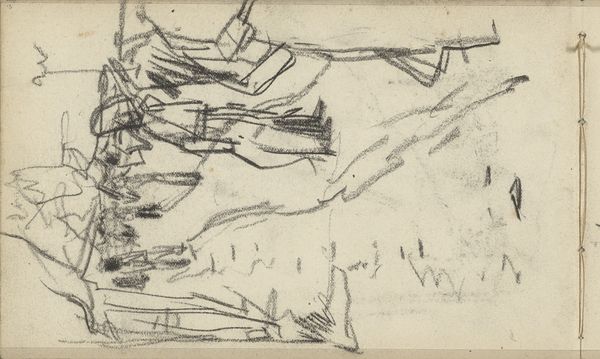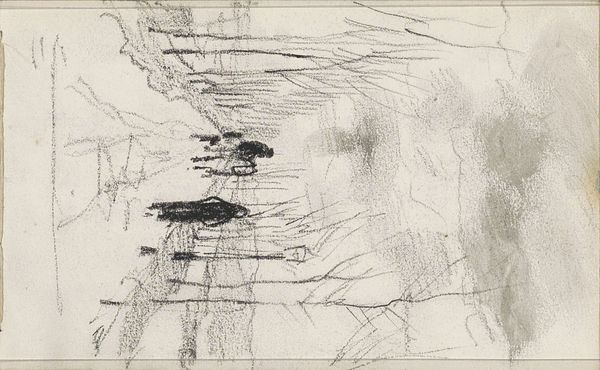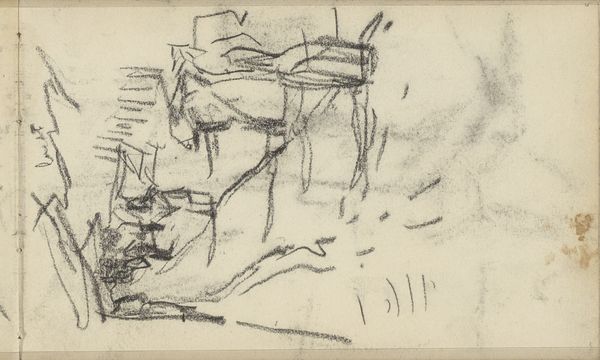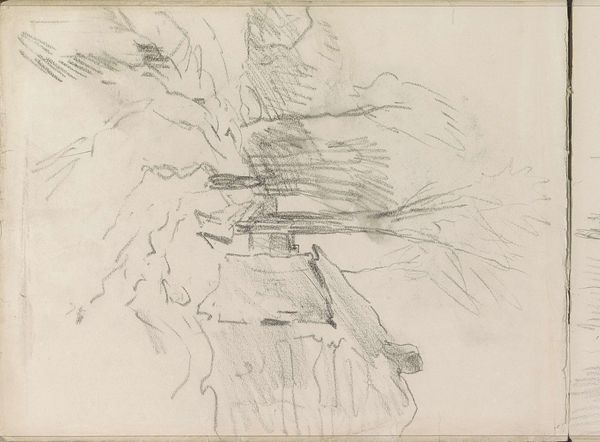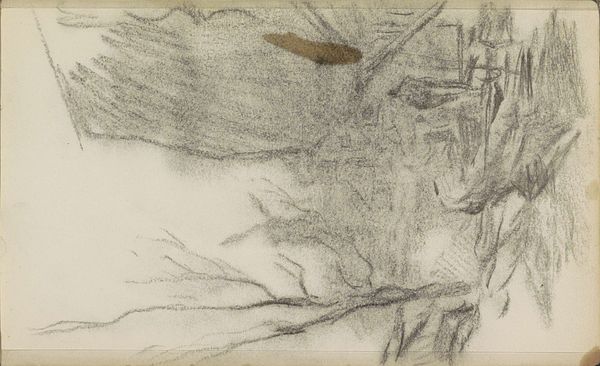
drawing, pencil
#
drawing
#
landscape
#
forest
#
pencil
#
realism
Copyright: Rijks Museum: Open Domain
Editor: This is Anton Mauve’s "Woodcutters by a Fallen Tree in a Forest," a pencil drawing created sometime between 1848 and 1888. It feels stark to me, very minimal. What stands out to you? Curator: It's fascinating how a simple sketch can evoke so much. For me, the fallen tree becomes a potent symbol. Consider the forest, a place of deep-rooted traditions, ancient knowledge, even the unconscious mind in some symbolic systems. The act of felling a tree, then, disrupts that order. Editor: So, are you seeing it as a violation of nature? Curator: Not necessarily a violation, but certainly a transformation. The woodcutters, figures of labor, are enacting a cultural narrative upon the landscape. The tree becomes lumber, material for building, fuel for fire – it’s transformed from a natural icon to a tool. Do you see any tension between the human figures and the natural forms? Editor: I guess I do now that you mention it. The workers seem really small compared to the tree and forest surrounding them, which feels intentional. Like they're having a big impact on a larger landscape. Curator: Exactly! And consider the historical context. Industrialization was burgeoning during Mauve's time. Could this scene reflect anxieties about the changing relationship between humanity and nature? The pencil medium itself – immediate, almost journalistic – adds to that sense of capturing a fleeting moment of transformation. Editor: That makes a lot of sense. I didn't think about the social implications. It gives a lot more depth to the piece. Thanks for helping me understand this a little bit better. Curator: My pleasure. It is interesting how much symbolism and interpretation can be drawn out from the simplest forms.
Comments
No comments
Be the first to comment and join the conversation on the ultimate creative platform.
